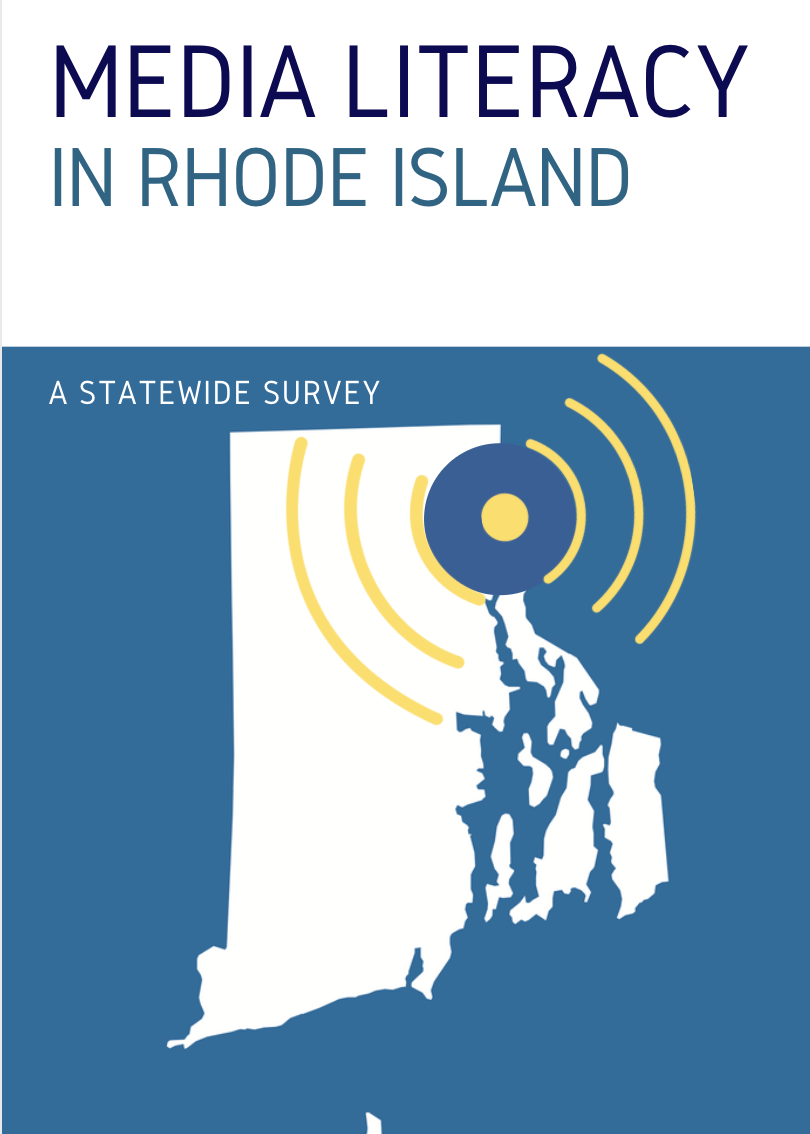 RESEARCH REPORT FINDS RI STUDENTS LACKING ACCESS TO MEDIA LITERACY EDUCATION
RESEARCH REPORT FINDS RI STUDENTS LACKING ACCESS TO MEDIA LITERACY EDUCATION
RI School Districts rankings released during National Media Literacy Week.2021
Access slides from the January 19th 2022 webinar here
In an age awash in misinformation, toxic social media, and deep political and cultural divisions, students need to learn how to critically analyze media messages. But not enough Rhode Island students are getting opportunities for media literacy education either at school or at home. Most of Rhode island's elementary and secondary students do not receive media literacy education, according to findings from a survey and interviews with over 500 educators, parents, and community leaders. This new report provides an overview of the research findings resulting from a statewide study of the level of media literacy integration in RI schools.
The study includes an online survey of over 500 school educators, administrators, parents, elected public officials, and community members, along with interviews with 30 respondents who provided more in-depth information. After analyzing the findings, letter grades were issued to school districts in Rhode Island to document their efforts in providing media literacy education to all students. Some key findings from the report include:
• Rhode Islanders are aware of the importance of media literacy education as they see the clear consequences of fake news, political polarization, and disinformation spread through social media
• Survey participants believe that the most important reason for valuing media literacy education is its capacity to improve people's ability to analyze information and recognize high-quality sources
• Some of the core instructional practices of media literacy are being used with students in Rhode Island's elementary, middle, and high schools. For example, 1 in 3 students learns how to comprehend and analyze news media in school
• Most RI students do not encounter media literacy learning experiences that help them understand advertising or the economics of media industries
• There are significant disparities between school districts, with some communities offering media literacy education to most or all students in elementary, middle-school and high school, while other communities give students fewer opportunities
• Beyond co-viewing, parents and guardians do not use a wide range of activities to build media literacy competencies with their children at home.
Striking differences were found between communities, noted Renee Hobbs, professor of communication studies at the University of Rhode Island and co-author of the report. For example, most students in West Warwick get exposure to media literacy instructional practices in elementary, middle, and high school, and the district has few challenges concerning access to technology, student readiness, or school climate. In communities like Coventry or Exeter West Greenwich, implementation of media literacy instructional practices only reaches a small proportion of learners, and educators, school leaders, parents, and community members there report a significant number of obstacles and challenges that limit innovation.
Watch the Webinar Recording:
More Information
The report was a response to a law passed by the Rhode Island General Assembly in 2017, which mandated the Rhode Island Department of Education to consider included media literacy in the state’s basic education plan. Pam Steager, head of Media Literacy Now Rhode Island and a co-author of the report said, “The Media Literacy Report Card provides educators, school leaders, and community members a baseline and a blueprint upon which they can build transformative media literacy programs for all learners in Rhode Island schools.”
School librarians know the value of media literacy instructional practices and opportunities for media literacy are already embedded in the national school library standards. According to Mary Moen, assistant professor of library and information studies at the University of Rhode Island, school librarians are trained to identify the cross curricular opportunities where media literacy education can take place in collaboration with English language arts, social studies, science, as well as in social emotional learning and civics education. “The high percentage of librarians who responded to this survey indicate that they care and are involved in media literacy education,” she said. “This evidence counters the outdated perspective that school librarians are just keepers of the books.”
Thanks to a grant from the Social Science Institute for Research, Education and Policy (SSIREP) at the University of Rhode Island, student researchers played an active role in the research process, working alongside professors and community leaders in media literacy. In the process, they learned more about what media literacy looks like in formal education. Rongwei Tang, a graduate student, said, “Working on this project, I had the opportunity to design survey questions and learn about the core instructional practices of media education.” She also got to interview educators in the field and learn about their teaching practices, the challenges they face and how media literacy education is implemented at schools. “This is perhaps the best preparation for becoming a media literacy leader,” said Steager, a longtime leader in the field.